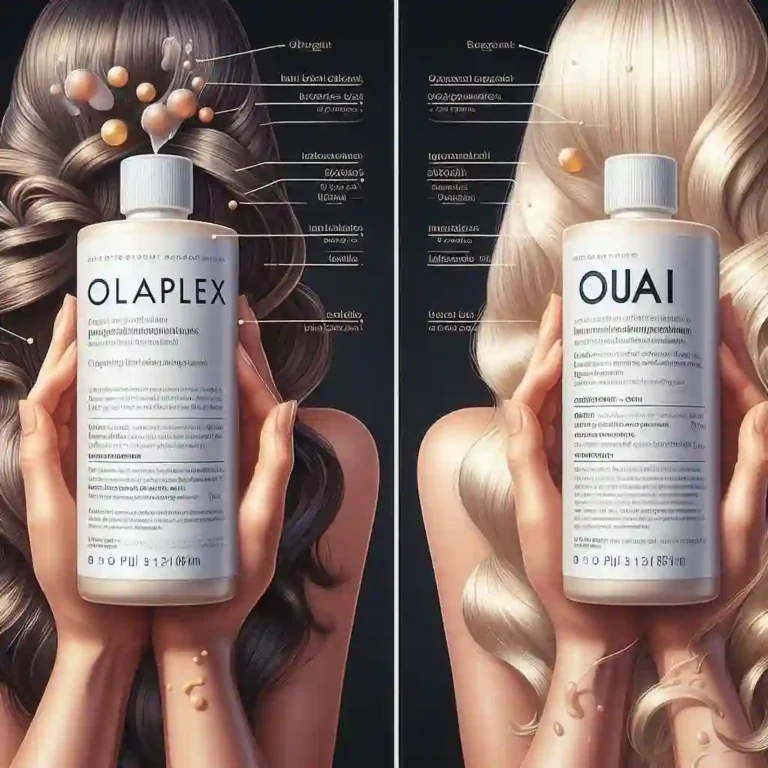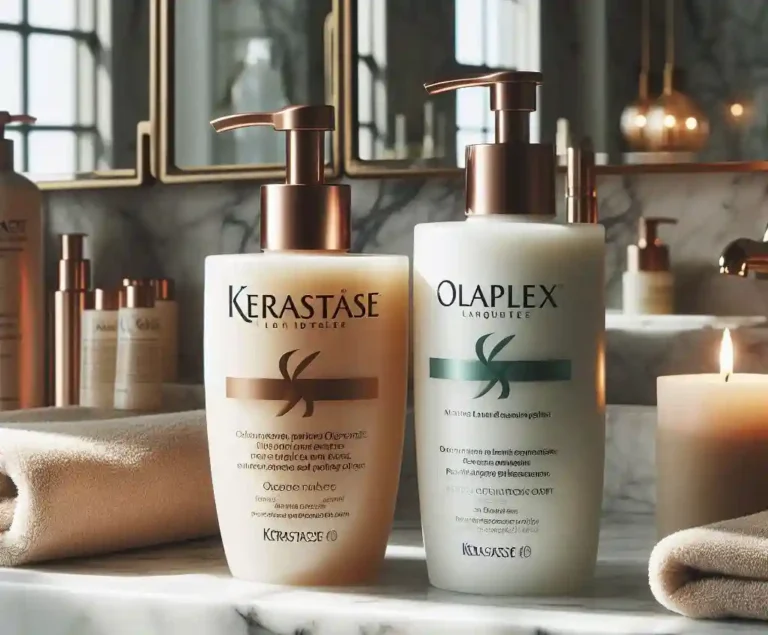Hims Topical Finasteride & Minoxidil Spray Review: Your Ultimate Hair Loss Solution Guide
Hair loss affects millions of men worldwide, creating a constant search for effective treatments. The combination of finasteride and minoxidil has emerged as the gold standard for male pattern baldness treatment.
Hims offers this powerful duo in a convenient topical spray format that promises to deliver results without the hassle of daily pills.
This comprehensive review examines everything you need to know about Hims topical finasteride and minoxidil spray, from its effectiveness to potential side effects.
Key Takeaways
- Dual Action Formula: The spray combines 0.3% finasteride and 6% minoxidil in one convenient application, targeting hair loss through two different mechanisms for maximum effectiveness
- Reduced Side Effects: Topical application significantly lowers systemic absorption compared to oral finasteride, potentially reducing sexual and other side effects by up to 100 times
- Proven Results Timeline: Clinical studies show that 90% of users experience hair regrowth within 3-6 months of consistent use, with visible improvements often starting around month 2-3
- Cost Effective Solution: Monthly pricing ranges from $33-60 depending on the package, making it competitive with other prescription hair loss treatments while offering higher active ingredient concentrations
- Easy Application Process: The spray format requires only 4-8 sprays daily applied directly to the scalp, eliminating the need for messy foam applications or daily pill routines
Understanding the Science Behind Hims Topical Treatment
The foundation of effective hair loss treatment lies in understanding the biological mechanisms that cause male pattern baldness. Dihydrotestosterone (DHT) serves as the primary culprit behind androgenetic alopecia. This hormone binds to hair follicles, causing them to shrink and eventually stop producing hair.
Finasteride works as a 5-alpha reductase inhibitor, blocking the enzyme responsible for converting testosterone into DHT. By reducing DHT levels in the scalp, finasteride helps preserve existing hair and can even stimulate regrowth of recently lost hair. The topical application allows for concentrated delivery directly to hair follicles.
Minoxidil operates through a completely different mechanism. This vasodilator increases blood flow to hair follicles, providing enhanced nutrient delivery and oxygen supply. Additionally, minoxidil extends the growth phase of the hair cycle, allowing follicles to produce thicker, longer strands. The combination of these two ingredients creates a synergistic effect that addresses hair loss from multiple angles.
How Hims Topical Spray Differs from Oral Medications
The transition from oral to topical hair loss treatments represents a significant advancement in patient care and treatment outcomes. Oral finasteride affects DHT levels throughout the entire body, which can lead to systemic side effects including sexual dysfunction, mood changes, and hormonal imbalances.
Topical application dramatically reduces these concerns. Clinical studies demonstrate that topical finasteride results in 100 times lower blood concentrations compared to oral administration. This targeted approach maintains therapeutic effectiveness while minimizing unwanted systemic effects.
The convenience factor also plays a crucial role. Many men prefer avoiding daily pills, especially when concerned about potential side effects. The spray application integrates easily into existing grooming routines. Users simply apply the treatment to clean, dry scalp areas twice daily.
Absorption rates differ significantly between formulations. While oral medications achieve rapid systemic distribution, topical treatments provide sustained local concentrations. This prolonged exposure to active ingredients can enhance therapeutic outcomes while reducing overall drug exposure.
Ingredient Breakdown: What Makes This Formula Effective
Hims topical spray contains 0.3% finasteride and 6% minoxidil, concentrations that exceed many competing products. These percentages represent optimal therapeutic levels based on clinical research and FDA approvals.
The finasteride concentration provides sufficient DHT inhibition without excessive systemic absorption. Studies show that even small amounts of topical finasteride can achieve significant DHT reduction in scalp tissue. The 0.3% concentration strikes an ideal balance between effectiveness and safety.
Minoxidil at 6% exceeds the standard 5% concentration found in most over-the-counter treatments. This higher concentration can provide enhanced results for users who haven’t responded adequately to lower strengths. The additional 1% may seem small, but it can make a meaningful difference in treatment outcomes.
Additional ingredients include propylene glycol as a penetration enhancer, helping active ingredients absorb through the skin barrier. Ethanol serves as a solvent and provides rapid drying upon application. These inactive ingredients are carefully selected to optimize drug delivery while maintaining product stability.
Clinical Evidence and Success Rates
Multiple clinical trials support the effectiveness of combined finasteride and minoxidil treatment. A pivotal study published in the Journal of the American Academy of Dermatology found that 90% of participants experienced some degree of hair regrowth after six months of treatment.
The research compared topical finasteride to both placebo and oral finasteride. Results showed that topical application achieved similar hair count improvements to oral medication while producing significantly fewer side effects. Hair density increased by an average of 14% after one year of treatment.
Minoxidil studies consistently demonstrate its effectiveness across different concentrations and formulations. The 6% concentration used in Hims spray has shown superior results compared to standard 5% formulations. Users typically see stabilization of hair loss within 2-3 months, followed by visible regrowth around month 4-6.
Long-term studies spanning up to two years show sustained improvements in hair density and thickness. The combination therapy appears to provide more durable results than either ingredient used alone. These findings support the synergistic approach employed in Hims topical spray.
Real User Results and Timeline Expectations
Understanding realistic timelines helps set appropriate expectations for treatment outcomes. Initial results typically become visible between months 2-4, starting with reduced hair shedding and improved hair quality.
The first phase involves stabilization, where active hair loss slows significantly. Users often notice less hair in the shower drain and on their pillow. This stabilization period is crucial for long-term success and indicates that the treatment is working effectively.
Month 3-6 brings visible regrowth for most users. New hair initially appears as fine, light-colored strands that gradually thicken and darken over time. Areas of thinning begin to fill in, and existing hair becomes stronger and more resilient.
Peak results typically occur around the 12-month mark. By this time, users have experienced the full benefits of treatment. Some individuals continue seeing improvements beyond one year, particularly in areas that were recently affected by hair loss.
Individual responses vary based on factors including age, genetics, extent of hair loss, and treatment adherence. Younger users with recent hair loss typically achieve better results than those with long-standing baldness. Consistency in application is crucial for optimal outcomes.
Step by Step Application Guide
Proper application technique significantly impacts treatment effectiveness and user satisfaction. Preparation begins with clean, dry scalp conditions. Washing hair with a gentle shampoo removes oils and styling products that could interfere with absorption.
Application process involves directing 4-8 sprays to affected areas of the scalp. The spray should be applied directly to the skin, not just the hair strands. Users should part their hair or use their fingers to ensure the solution reaches the scalp surface.
Distribution requires gentle massage with fingertips to spread the solution evenly across treatment areas. This massaging action also promotes blood circulation, which may enhance the effectiveness of minoxidil. The entire process should take 2-3 minutes.
Drying time is approximately 10-15 minutes before the solution becomes invisible. During this period, avoid touching the treated areas or applying other hair products. Some users prefer applying the treatment before bedtime to allow overnight absorption.
Frequency recommendations specify twice-daily application for optimal results. Morning and evening applications maintain consistent drug levels in scalp tissue. Missing occasional applications won’t significantly impact results, but consistency is important for best outcomes.
Potential Side Effects and Safety Profile
The safety profile of topical finasteride and minoxidil combination therapy is generally favorable compared to oral alternatives. Local side effects are the most common, including scalp irritation, dryness, and occasional itching.
Scalp irritation affects approximately 10-15% of users, typically occurring during the first few weeks of treatment. This reaction usually subsides as the skin adapts to the formulation. Using a gentle moisturizer can help alleviate dryness and irritation.
Systemic effects from topical finasteride are significantly less common than with oral administration. Sexual side effects occur in less than 3% of topical users compared to 15-20% with oral finasteride. When systemic effects do occur, they’re typically mild and reversible.
Minoxidil-related effects can include temporary increased hair shedding during the first month of treatment. This “shedding phase” indicates that the treatment is working by accelerating the hair cycle. New, stronger hair replaces the shed hair over subsequent months.
Rare reactions include allergic responses to inactive ingredients. Users with sensitive skin should perform a patch test before full application. Discontinuing treatment and consulting a healthcare provider is recommended if severe reactions occur.
Cost Analysis and Value Comparison
Understanding the financial commitment helps users make informed decisions about long-term treatment. Monthly costs for Hims topical spray range from $33-60 depending on the subscription plan and additional products included.
Comparative pricing shows Hims offers competitive rates compared to other prescription hair loss services. Traditional dermatology visits plus prescription costs often exceed $100 monthly. The convenience of online consultation and direct delivery adds significant value.
Long-term considerations are important since hair loss treatment requires ongoing commitment. Annual costs range from $400-720, which compares favorably to hair transplant procedures costing $10,000-20,000. The investment in prevention often proves more cost-effective than surgical restoration.
Insurance coverage for cosmetic hair loss treatments is typically limited. However, some HSA and FSA accounts may cover prescription hair loss medications. Users should check with their benefits administrator for specific coverage details.
Value proposition extends beyond cost to include convenience, effectiveness, and reduced side effect profile. The combination of two proven ingredients in one formulation eliminates the need for separate purchases and applications.
Comparing Hims to Other Hair Loss Brands
The competitive landscape for hair loss treatments includes several major players, each offering different approaches and formulations. Keeps provides similar combination therapy but with lower active ingredient concentrations (0.25% finasteride and 5% minoxidil).
Roman offers both oral and topical options but focuses more heavily on oral finasteride. Their topical formulation contains standard concentrations without the enhanced strength found in Hims products. Customer service and consultation quality vary between providers.
Generic alternatives from traditional pharmacies offer cost savings but require separate prescriptions for each ingredient. The convenience and optimization of combined formulations often justify the premium pricing of specialized providers.
Compounding pharmacies can create custom formulations but lack the standardization and quality control of established brands. Consistency between batches may vary, potentially affecting treatment outcomes.
Overall comparison shows Hims providing superior active ingredient concentrations, convenient delivery, and comprehensive customer support. The slight price premium reflects these enhanced features and proven effectiveness.
Who Should Consider This Treatment
Ideal candidates for Hims topical spray include men experiencing early to moderate male pattern baldness. Treatment works best when hair follicles remain active, making early intervention crucial for optimal results.
Age considerations favor users between 25-50 years old, though effectiveness can extend beyond this range. Younger users with recent hair loss typically achieve the most dramatic improvements. Older users with extensive baldness may see modest improvements.
Medical eligibility requires absence of certain conditions and medications that could interact with treatment ingredients. Users should disclose all medications and health conditions during the online consultation process.
Lifestyle factors play important roles in treatment success. Users must commit to twice-daily applications for at least 6-12 months to assess effectiveness. Those with irregular schedules or frequent travel may find consistency challenging.
Contraindications include pregnancy (for partners), liver disease, and allergies to treatment ingredients. The online consultation process helps identify potential issues before starting treatment.
Tips for Maximizing Treatment Success
Consistency represents the most critical factor in achieving successful outcomes. Setting daily reminders or incorporating application into existing routines helps maintain regular usage patterns.
Scalp health optimization enhances treatment absorption and effectiveness. Using gentle, sulfate-free shampoos maintains healthy scalp conditions. Avoiding excessive heat styling and harsh chemicals protects existing hair during the regrowth process.
Patience is essential since hair growth occurs slowly over months. Taking monthly photos helps track progress that may not be immediately visible day-to-day. Focusing on hair quality improvements rather than just quantity can help maintain motivation.
Lifestyle modifications support overall hair health. Adequate protein intake, stress management, and regular exercise contribute to optimal treatment outcomes. Smoking cessation and limiting alcohol consumption may also improve results.
Professional monitoring through follow-up consultations helps optimize treatment plans. Adjusting concentrations or adding complementary therapies may enhance results for some users.
Long Term Maintenance and Results
Sustained treatment is necessary to maintain results since stopping treatment typically leads to gradual return of hair loss. Users should plan for ongoing monthly costs as part of their long-term grooming budget.
Result maintenance requires continued twice-daily application even after achieving desired outcomes. Some users may be able to reduce frequency to once daily after 12-18 months, but this should be done under medical supervision.
Treatment evolution may involve adjusting formulations or adding complementary therapies over time. Some users benefit from periodic increases in concentration or addition of other hair growth factors.
Quality of life improvements often extend beyond just hair restoration. Many users report increased confidence, improved self-image, and greater satisfaction with their appearance. These psychological benefits can justify the ongoing investment for many individuals.
Future planning should consider potential changes in hair loss patterns and treatment needs. Having realistic expectations about long-term maintenance helps ensure continued treatment success.
Frequently Asked Questions
How long does it take to see results with Hims topical spray?
Most users notice reduced hair shedding within 4-6 weeks and visible regrowth beginning around month 3-4 of consistent use.
Can women use Hims topical finasteride and minoxidil spray?
No, finasteride is not approved for women due to potential birth defects and hormonal effects.
What happens if I miss a dose?
Missing occasional applications won’t significantly impact results, but consistency is important for optimal effectiveness.
Is the treatment permanent?
Results last only as long as treatment continues; stopping typically leads to gradual return of hair loss.
Can I use other hair products while using the spray?
Yes, but apply the treatment to clean scalp first and wait 4-6 hours before using styling products.
Does insurance cover Hims treatment?
Most insurance plans don’t cover cosmetic hair loss treatments, but some HSA/FSA accounts may apply.
How does topical compare to oral finasteride effectiveness?
Clinical studies show similar hair regrowth results with significantly fewer side effects from topical application.
Can I increase the frequency of application for faster results?
No, more than twice daily application may increase side effects without improving effectiveness.

Hi, I’m Rachel Powell, the founder and creative mind behind FashionBeautyLooks.com. With a passion for all things fashion and beauty, I’ve dedicated my career to helping others discover their unique style and enhance their natural beauty.







